What distinguishes British beer in a world brimming with brewing traditions? This article dives straight into answering that question by unraveling the diverse styles that define the British beer scene. From cherished ales and stouts to the burgeoning craft innovations and the pubs that serve them, we’ll explore the character and appeal of British beer. Prepare to discover what sets British brews apart and why they maintain a revered place in the world of beer.
Key Takeaways
The diverse range of British beers reflects a rich brewing tradition with the deep-rooted beer culture being centered around the pub experience and characterized by a variety of styles from ales to stouts.
The British craft beer revolution has energized the industry, resulting in over 1,500 microbreweries and introducing innovative practices and flavors while preserving the essence of classic styles.
CAMRA and real ale advocacy, alongside events that promote British beer culture like beer festivals and courses for brewing enthusiasts, play a significant role in preserving traditional brewing practices and pub culture.
Exploring the British Beer Landscape
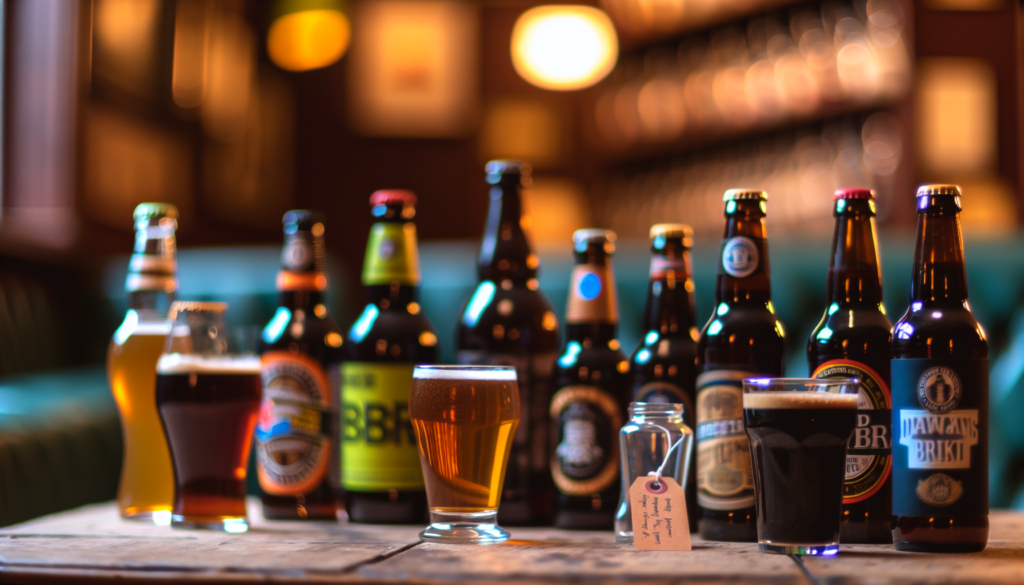
The British beer landscape is a diverse tapestry woven with a rich history and an array of beer styles. From the time-honored ales and stouts to the contemporary craft beer movement, each brew embodies the distinctive aromas and flavors that make British beers renowned worldwide. Today, lager may predominate sales with most popular beer brands like Budweiser and Heineken, and stout, in the form of Guinness, but the heart of British brewing lies in the traditional ales and lagers that grace the pubs across the nation.
The culture of British beer is deeply intertwined with pub life, where cask ale and the traditional pub play a prominent role in the beer experience. These pubs, or “public houses,” are far more than watering holes; they’re social hubs where friendships are forged, stories exchanged, and the communal pint savored. But the landscape is not just about pubs; it also features world-class breweries, craft beer outlets, and beer festivals that showcase the country’s brewing prowess.
With a range from the balanced bitterness of pale ales to the robust richness of stouts, British beers cater to a wide array of tastes. The diversity of the British beer scene promises an exciting journey of discovery, inviting both seasoned British beer drinkers and curious newcomers to delve into this flavorful world.
The Ale Legacy: Bitters and Pale Ales
Dating back to the 1600s, the term ‘bitter’ emerged in the 19th century to describe the sharper, hoppier beers that contrasted with the less hoppy milds. This gave rise to names like ordinary bitter and pale ale, cementing their place in British brewing history. Traditional pale ales encompass a range of bitter and India pale ale styles, their golden to copper hues a testament to the varying malt types used in their brewing.
Distinguished by their rich malt character harmoniously balanced with hop bitterness, British bitters and pale ales often feature a blend of fruity, toasty, caramelly, and earthy notes, creating a well-rounded flavor profile where no single note overshadows the others. The bitter family hosts a variety of styles, each distinguished by their unique balance of malt flavor and hop character. From the Ordinary Bitters with an ABV of 3.2 to 3.8%, Best/Special Bitters at 3.8 to 4.6%, and Strong Bitters/ESB at up to 7% or more, there’s a bitter to suit every palate.
Whether you’re savoring the hoppy sharpness of an India pale ale or the balanced bitterness of a traditional bitter, the legacy of British ales is one of rich diversity and complex flavors. Each sip is a nod to centuries of brewing tradition, a testament to the enduring appeal of these iconic styles.
The Stout and Porter Heritage
Delving into the darker side of British beers, we encounter the robust world of stouts and porters. These beer styles originated as a variation on ‘brown beer’ and eventually gave rise to robust porter, Baltic porter, and stout porter. British porters evolved into sub-styles, including brown porters with their rich color and chocolate or toffee notes, and robust porters with a more assertive roasty bitterness.
Stouts, typically known for their strength and roasty bitterness, vary in style from:
the lighter-bodied and bitter Irish dry stout
the sweet, full-bodied milk stout
the velvety oatmeal stout enriched with aromatic hints of dark chocolate and espresso
Despite evolving to suit modern tastes, contemporary stouts and porters retain the classic profiles that link them to their heritage, offering dark and roasty flavors that date back to their 18th-century roots in London.
From the silky richness of a milk stout to the robust bitterness of a classic porter, these dark brews represent the intriguing variety of flavors and textures achievable in beer. Each pint serves as a tribute to a brewing heritage that has endured and evolved over time, while retaining its authentic roots.
The Revival of Brown Ales
From the shadows of history, brown ale has made a triumphant return, reemerging as a beloved style in the British brewing landscape with deep roots in the nation’s ale history. The revival of this classic style is a testament to the enduring appeal of traditional beer styles, even in an age of experimental brews and craft beer innovation.
The revitalized Northern English brown ales are known for their:
Nutty, caramel, and dried fruit malt flavors
Nuanced brews
Alcohol by volume (ABV) range of 4.0% to 5.5%
Catering to modern palates that appreciate the balance of rich flavor and sessionable strength.
The resurgence of brown ales today signifies both an acknowledgement of tradition and an ongoing spirit of innovation and experimentation among brewers. These ales demonstrate the dynamic nature of the beer world, where traditional favorites can be revitalized and continue to bring joy to beer enthusiasts for many generations.
Craft Beer Revolution: Microbreweries and Innovation
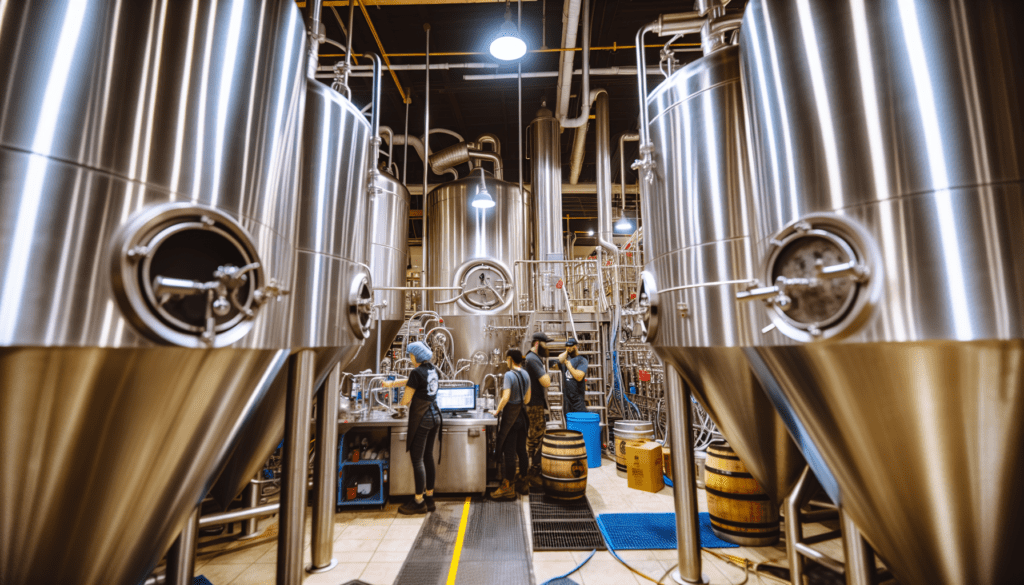
The British craft beer revolution has reshaped the beer landscape, breathing new life into the brewing industry. Today, the UK is home to over 1,500 small breweries, a testament to the country’s vibrant and innovative beer scene. This revolution, characterized by a strong sense of independence and community focus, was largely spurred by the global beer appreciation championed by Michael Jackson.
This wave of creativity and innovation has pushed the boundaries of brewing, leading to the rise of rich, flavorful imperial stouts. Craft brewers often experiment with barrel-aging and adding unique flavors like coffee or chocolate, resulting in brews that are as complex as they are delicious.
Stretching from the heart of London to the Scottish highlands, microbreweries do more than just produce beer; they craft narratives, foster communities, and redefine the possibilities of brewing. They stand as evidence that the world of British beer is ever-evolving, always offering something new to explore.
Hops Meet Creativity: The Rise of IPA
The India Pale Ale (IPA), with its well-hopped profile and high alcohol content, began as a British beer style designed to withstand the long sea voyages to British colonies in the late 1700s. Over time, to cater to modern tastes, IPAs have evolved to feature increasingly fruity and floral hop varieties. Some popular hop varieties used in IPAs include:
Citra
Mosaic
Simcoe
Amarillo
Cascade
These hops contribute to the distinct flavors and aromas that make IPAs so popular among beer enthusiasts.
While traditional English-style IPAs feature a balanced blend of:
earthy
grassy
floral English hops
toasty or caramelly malt
fruity yeast
Modern interpretations lean towards a more pronounced hop-forward nature. This evolution demonstrates the flexibility and adaptability of the IPA style, an iconic representative of the craft beer revolution.
Hodgson’s Brewery first introduced the term ‘India Pale Ale’ in 1820, which became widely used by 1835, signifying its official inclusion in the vocabulary of British brewing. Presently, IPAs maintain their popularity among beer enthusiasts due to their bold hop character and complexity, symbolizing the innovative spirit that characterizes the craft beer movement.
The Sessionable and the Strong: From Mild Ales to Imperial Stouts
The beauty of British beer is in its diversity, spanning the spectrum from sessionable mild ales to strong imperial stouts. Mild ales, traditionally known for their low alcohol content, were a favored choice among British working-class due to affordability and flavor. These ales offer a complex range of tastes, including toasty, caramel, nutty, licorice, raisin, and chocolatey notes, providing rich flavor despite their modest alcohol content. Among these diverse options, malty beers hold a special place in the hearts of British beer enthusiasts.
Modern mild ales predominantly range from dark brown to lighter shades, with a fruity yeast flavor that can sometimes be buttery. Today, the craft beer movement has breathed new life into this classic style, leading to new interpretations and greater experimentation, including the incorporation of pale lager influences.
On the other hand, English imperial stouts are distinguished by a malt-forward profile and a wide spectrum of flavors, as opposed to pronounced hop bitterness. Regardless of whether you prefer a light session with mild ales or the bold richness of an imperial stout, the British beer scene has a brew to suit all occasions and tastes.
The Social Pint: Pub Culture and Beer Festivals
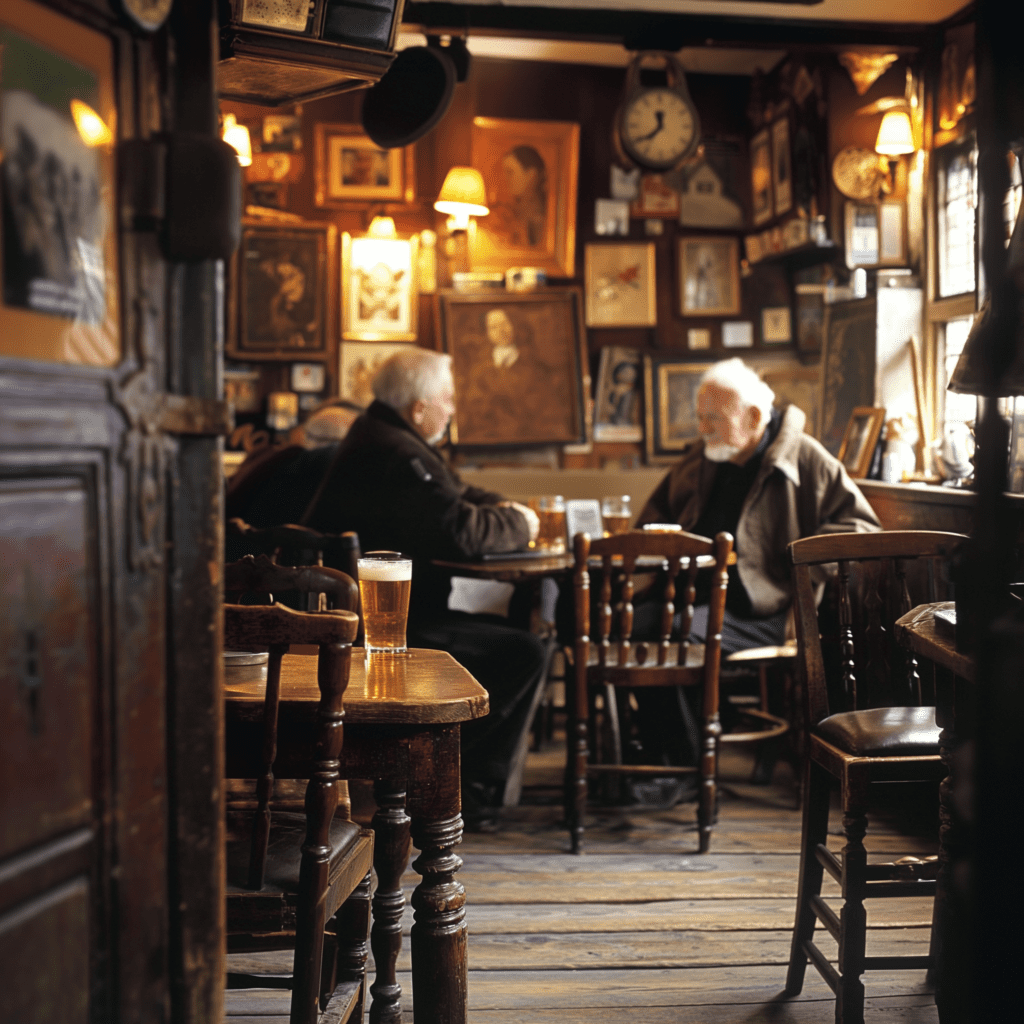
British pub culture is as much a part of the beer experience as the brew itself. In traditional British pubs, patrons order their drinks directly at the bar and pay immediately for each round, fostering a sense of community and camaraderie. However, the rise of gastropubs, craft beer outlets, and pub chains introduces competition that could endanger the survival of local pubs.
The influence of British pub culture extends beyond its borders. With initiatives like ‘Pub Culture Beercations,’ it shares its values and social experiences worldwide, inviting beer enthusiasts to a blend of beer tasting and cultural exploration. UK beer festivals are not just about the drinks; they offer a comprehensive cultural experience, including traditional cuisine, local customs, and visits to historical sites.
Whether it’s the cozy corner pub or a bustling beer festival, the social pint is at the heart of British beer culture. It’s a celebration of community, tradition, and of course, excellent beer.
Beyond the Bar: Craft Beer Outlets and Bottle Shops
Beyond traditional pubs, craft beer outlets and bottle shops play a crucial role in the British beer scene. Often referred to as ‘Aladdin’s Caves’ for beer enthusiasts, these outlets provide a wide variety of craft beer, cider, spirits, and wine from all over the world. They feature the latest UK craft beers alongside well-known international picks from Belgium, Germany, and the US, reflecting their commitment to diversity and current trends.
The pricing in these outlets is often more budget-friendly compared to pubs, with identical beers sometimes costing half the price or less, making them an appealing option for sampling new beers. Despite the changing landscape due to acquisitions by larger brewing entities, such as the takeover of Sharps Brewery by MolsonCoors and the sale of Meantime Brewing Company to SABMiller, these outlets continue to thrive, offering a diverse range of beers for every palate.
Craft beer outlets and bottle shops offer an exciting opportunity for everyone, from seasoned beer connoisseurs to curious newcomers, to delve into the vast world of beer, including bottled beer. They represent the adaptability and resilience of the British beer scene, playing a crucial role in its promising future.
A Taste of Tradition: The Classics and Their Modern Counterparts
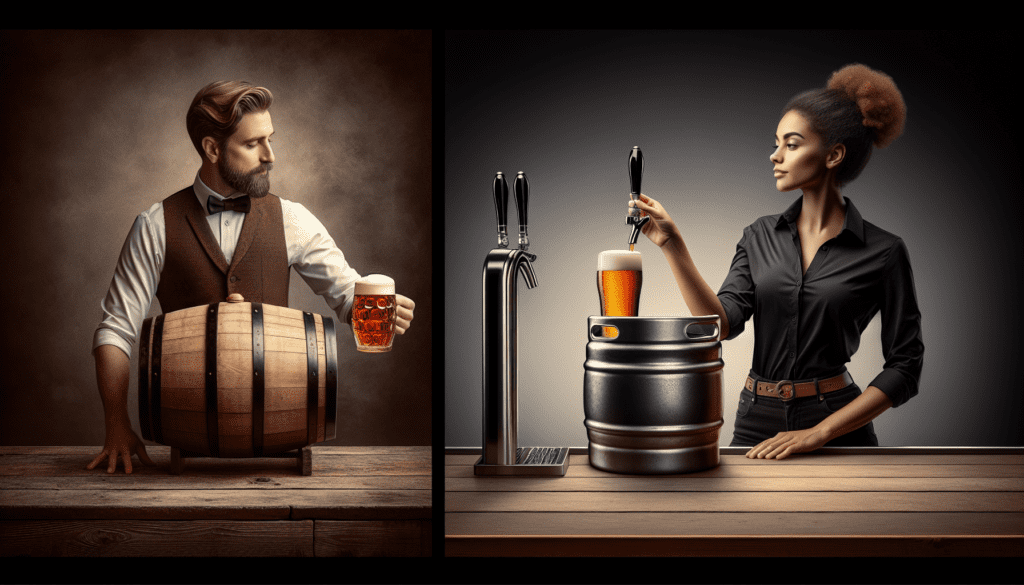
British brewing is a fascinating blend of tradition and innovation. Classic styles like Burton ales have stood the test of time, their dark, sweet, and often fruity character a testament to the rich heritage of British beer. Inspired by this tradition, modern brewers have created their interpretations of these classics, such as Marston’s Brewery’s Owd Rodger Strong Ale and Fuller’s Past Masters’ series.
Contemporary craft breweries have also attempted to revive the Burton ale style, often using historical recipes as their source of inspiration. Similarly, English Old Ales offer mellow notes of dark fruits and varieties ranging from lighter to dark, rich profiles. Some examples of English Old Ales include:
Tangy and acidic character from extended aging
Mellow flavors of dark fruits
Lighter profiles with subtle richness
Dark, rich profiles with bold flavors
These beers are a great choice for those who enjoy complex and flavorful brews.
Whether it’s the spicy bite of a traditional ale or the rich complexity of a modern barleywine, the classics and their modern counterparts offer a fascinating insight into the past, present, and future of British brewing. They’re a testament to the resilience of tradition and the power of innovation, a delicious reminder that in the world of beer, old and new can coexist in a beautiful harmony.
Serving It Right: Cask Ale vs. Keg Beer
When it comes to British beer, how it’s served is almost as important as how it’s brewed. Cask ale, for instance, is best enjoyed at cellar temperature, around 53 degrees Fahrenheit. This not only provides an authentic experience to the drinker but also preserves its intended flavor profile. Cask ale features soft carbonation from natural fermentation and does not have additional carbon dioxide, leading to a distinctively smooth mouthfeel compared to the sharper carbonation of keg beer, which is carbonated from an external source.
However, cask ale has its challenges. Since it is exposed to air when tapped and needs to be consumed within three days to maintain quality, it can suffer in flavor and experience if it is not sold quickly. This influences some pubs to favor keg beer for its longer shelf life. Historically, cask ale has also been less expensive than keg beer, reflecting its roots as a traditional working man’s drink and, in some cases, the lower production costs associated with its brewing.
The correct serving of British beer styles, whether the smooth, nuanced flavors of a cask ale or the crisp, refreshing taste of a keg beer, is essential to the drinking experience. It reflects the meticulous care and craftsmanship invested in every pint, reinforcing its integral role in the British beer tradition.
Brewing Behind the Scenes: Ingredients and Techniques
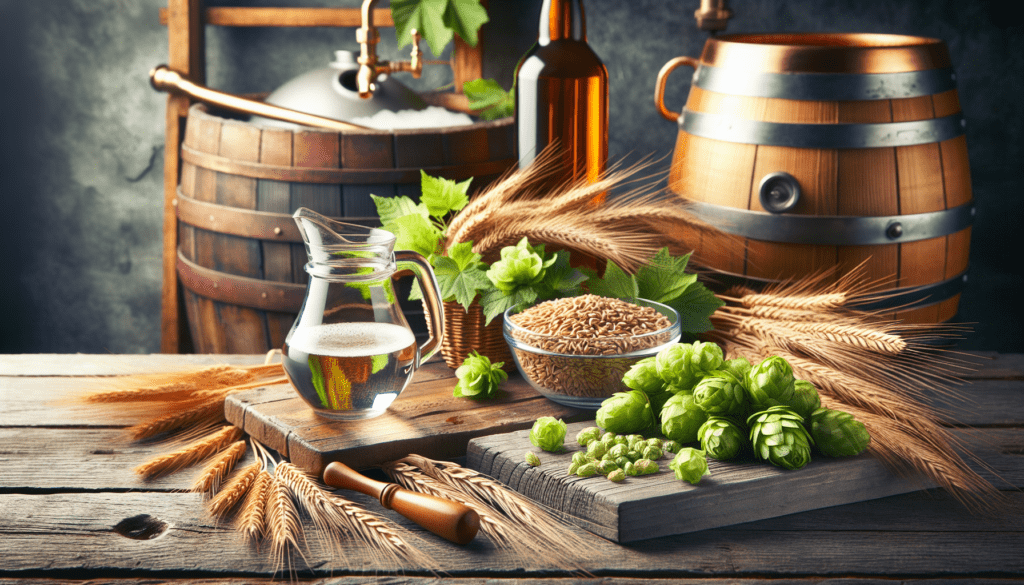
Every exceptional beer is the result of a fusion of quality ingredients and skilled brewing techniques. Fundamentally, British beer brewing relies on four key ingredients:
Malt
Hops
Yeast
Water
These foundational ingredients form the basis for an extensive array of flavors and styles, all the way from the lightest golden ale to the darkest stout.
Distinctive British hop varieties like East Kent Goldings, Fuggles, and Northern Brewer play a crucial role in shaping the flavor profiles of British beers, imparting:
spicy
earthy
herbal
woody
grassy
tangy notes
Brewers also diversify beer flavors by incorporating different plants, minerals, and additives into the brewing process, adding another layer of complexity to the brew.
Each brewer’s unique processes and additive flavors mean that even with identical starting ingredients, the end products will vary in taste and character. This behind-the-scenes look at brewing offers a fascinating insight into the craft and creativity that goes into each pint of British beer, a testament to the art and science of brewing.
The Thirst for Knowledge: Education and Home Brewing
As appreciation for British beer intensifies, so does the desire to learn more about brewing. For example, the UK’s Brew-School offers a wide selection of beer brewing courses designed for both hobbyists and professional brewers. Their curricula cover skills from basic all-grain brewing for beginners to advanced techniques required in the microbrewery industry.
Brew-School participants even have the unique chance to actively brew beer with a commercial brewer in the scenic Peak District. For those interested in the business side of brewing, Brew-School offers a course focused on buying, leasing, or establishing a pub or micropub, priming individuals for successful brewing business management.
The global home brewing market is also burgeoning, projected to reach an estimated revenue of $28.8 billion by 2028, with an annual growth rate of 8.5% from 2021. This growing interest in home brewing reflects a broader trend of beer appreciation, where beer lovers are not just content to drink their favorite brews but also eager to learn how to make them.
Preserving the Brew: The Role of CAMRA and Real Ale Advocacy
The preservation of tradition and promotion of British beer appreciation are missions undertaken by passionate individuals and organizations, notably the Campaign for Real Ale (CAMRA). Boasting over 180,000 members, CAMRA has been a key player in the UK craft beer revolution since its establishment in 1971, challenging the dominance of mass-produced beers and advocating for traditional brewing practices.
Through passionate advocacy, CAMRA has worked to ensure that a diverse array of real ale and cask beer is widely available across the UK, highlighting the significance of these traditional beverages. CAMRA’s Golden Awards celebrate pubs, pints, and people that significantly contribute to its mission, honoring venues like The Bell Inn, The Red Lion, and The Leyton Orient Supporters Club, and individuals who have made an impact on the real ale scene.
CAMRA is instrumental in supporting the great British pub as a crucial social and cultural institution, advocating for favorable conditions and recognition of pubs that personify this legacy. Whether it’s championing the cause of real ale or preserving pub culture, CAMRA’s tireless advocacy plays a vital role in keeping the tradition of British beer alive and thriving.
Summary
In this exploration of British beer, we’ve traversed the rich tapestry of traditional brewing, the vibrant craft beer revolution, the social pint of pub culture, the significance of serving styles, the art of brewing, the thirst for knowledge in education and home brewing, and the vital role of advocacy in preserving the brew. Each sip of British beer is a testament to a rich heritage, a vibrant community, and a passion for quality and creativity. So, whether you’re raising a pint in a cozy pub or brewing your own batch at home, remember the journey that each beer represents – a journey of tradition, innovation, and above all, a love for good beer.
Frequently Asked Questions
What is the most popular British beer?
The most popular British beer brands are Carling, Fosters, and Carlsberg. If you’re looking for a popular British beer, these are some top choices.
What is a traditional British beer?
The traditional British beer includes styles like bitter, mild, brown ale, old ale, stout, porter, and India pale ale, alongside the popular lager which gained prominence from the mid-20th century.
What is the difference between American and British beer?
British beer often uses British hops with earthy, woody, and floral flavors, while American beer uses American hops with citrus, pine, and resin flavors. This creates a noticeable difference in the flavor profile of the two types of beer.
What are the main types of British beer?
British beer encompasses traditional ales, stouts, and porters, as well as modern craft beers with diverse flavors and strengths. Enjoy exploring the variety!
How has the craft beer revolution influenced British brewing?
The craft beer revolution has significantly impacted British brewing by introducing new styles, flavors, and promoting small, independent breweries. It has encouraged experimentation in the industry.


Leave a Reply